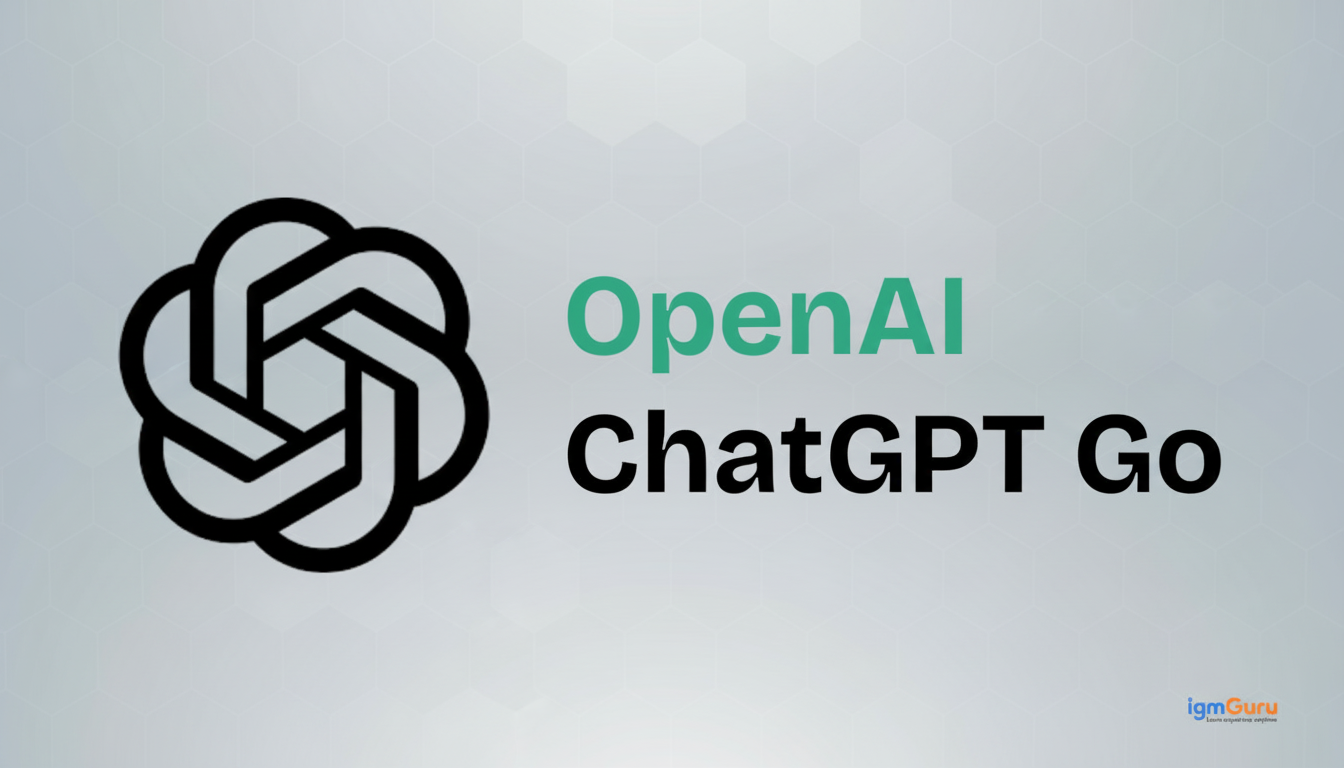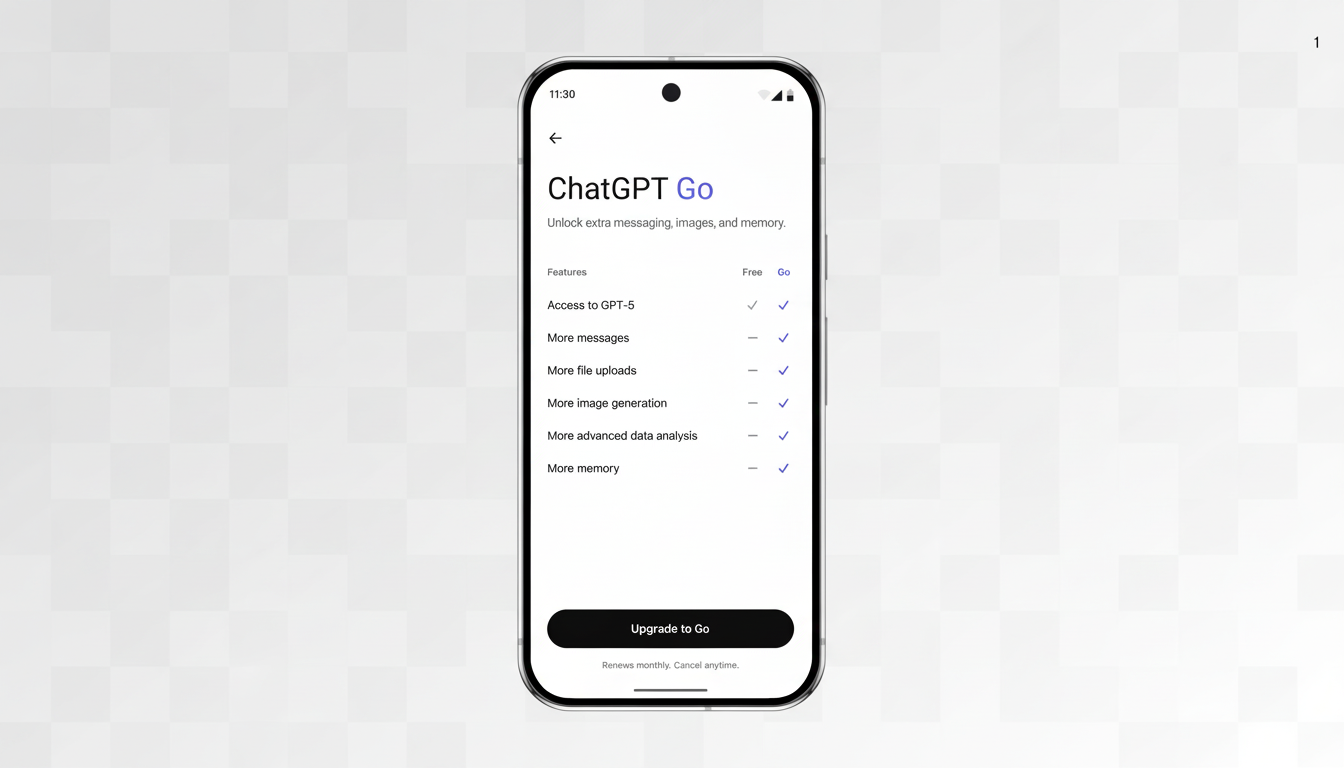OpenAI is doing an aggressive push in one of its biggest markets by giving all users in India a free, one-year subscription to ChatGPT Go if they sign up during a promotional window that won’t last indefinitely. The company said it was also offering 12 months at no cost to existing ChatGPT Go subscribers in India, which signaled an aggressive distribution strategy to swiftly multiply adoption and user base across consumers and developers in the country.
What the free year of ChatGPT Go in India actually provides
ChatGPT Go, billed as OpenAI’s cheapest offering at under $5 per month in India, pushes the ceiling on what the free tier can accomplish.
- What the free year of ChatGPT Go in India actually provides
- Why India matters for OpenAI’s growth and developer reach
- Competitive pressure is rising as rivals court Indian users
- How users and businesses in India stand to benefit this year
- Policy and trust considerations for a rapidly growing user base
- What to watch next as OpenAI rolls out offers across India

Users receive about 10x more usage than the basic version, but with faster response times and the ability to generate images; they can also upload files for analysis. It also features better memory through which it can fine-tune over time what information to provide.
Practically, that will allow students to work with large PDFs for study notes, take one step from draft brainstorming to visuals and let small teams iterate freely on business documents without running into restrictive limits. OpenAI has not made all caps available publicly, but the increased allowance for Go is presumably meant to accommodate heavier daily workloads that often prompt free users toward paid plans.
Why India matters for OpenAI’s growth and developer reach
India provides the scale, speed and talent density that AI companies covet. The country has over 700 million smartphone users, while telecom regulator TRAI counts well over 900 million broadband connections—conditions that lend wings to AI apps crossing the chasm from early adopters to mainstream users. Throw in a young population and one of the world’s largest developer communities — GitHub’s latest figures place India near the top globally — and the calculus becomes clear.
OpenAI has been developing an on-the-ground approach via an office in New Delhi and a local team focused on partnerships and enterprise adoption. It’s not just consumer usage — it’s also a developing funnel of startups, IT services firms and global captives keen to embed generative AI within products and processes at scale.
Competitive pressure is rising as rivals court Indian users
The complimentary year of Go arrives in a burgeoning AI market competing for Indian users. (Confusingly, OpenAI says that it has made a deal with Indian carrier Airtel to give away free Pro service to that company’s reported 360 million subscribers in India; seeding a nationwide user base overnight seems like it would be a bigger boon.) Google has also introduced an AI Pro plan for students, a one-year away-from-home shot targeting India’s academic and early-career cohorts.

These tactics suggest an evolving playbook: subsidize premium AI features to gain mindshare and habit formation, then pursue monetization down the line via bundles, enterprise seats and value-added services. In a market that is structurally lower in average revenue per user than the West, scale becomes the strategy — and partnerships with telecoms, banks and edtech platforms are the accelerants.
How users and businesses in India stand to benefit this year
For people, the upgrade eliminates one major point of friction: usage limits. Students can run more experiments, job seekers have an opportunity to further polish their resume and interview prep, and creators can iterate on scripts and visuals without repeatedly bumping against caps. For microbusinesses and SMBs, more file processing power and memory mean faster proposals, product briefs and customer support responses at near-zero incremental cost for a year.
Local relevance will be critical. India’s linguistic diversity and industry-specific requirements – financial services, healthcare, retail, and the government sector – require tools that can process mixed-language input, domain terminology and compliant data handling. Though OpenAI has not outlined any new India-specific models, the company has suggested more profound localization and enterprise features timed to community events in the country.
Policy and trust considerations for a rapidly growing user base
As usage increases, trust and safety will continue to be a focus. India’s Digital Personal Data Protection Act sets a high standard for how companies collect consent, hold onto data and transfer it across borders. For those large organizations testing ChatGPT Go in pilot mode, expect to find robust admin controls, auditability and restrictions for training on sensitive inputs. From the consumer side, knowing hallucination rate as well as source attribution will drive sustained adoption.
What to watch next as OpenAI rolls out offers across India
OpenAI is all geared up to bring developers in Bengaluru on a common platform through its DevDay Exchange, as part of which industry watchers anticipate announcements around India-specific partnerships, education programs and enterprise integrations. Key metrics to pay attention to include the following:
- Rates of activation during the promotional window
- Daily active usage against the free tier
- Retention after the free year concludes
- Whether OpenAI can sign distribution deals comparable to telecom bundle arrangements seen elsewhere
An entire free year of ChatGPT Go is really more than a gift. It’s a land-grab in the world’s most dynamic digital market, a testing ground for localized AI products and an indication that the race is on to become India’s next billion AI-native users.

